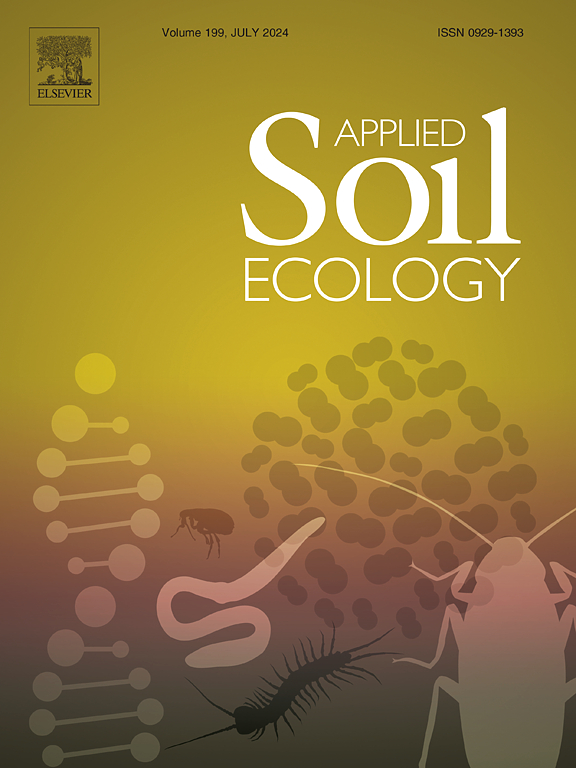Disturbance from tillage is a dominant factor in explaining differences in soil biodiversity of three grasslands management types
IF 4.8
2区 农林科学
Q1 SOIL SCIENCE
引用次数: 0
Abstract
Intensification of agriculture has reduced both aboveground and belowground biodiversity, as well as their ecosystem services. A transition towards regenerative agricultural systems is supposed to enhance functional agro-biodiversity and create more resilient systems. For dairy or beef farming, extensification towards semi-natural grasslands and establishing multi-species grasslands are potential contributors to this transition. Both grassland types differ in terms of plant diversity and management, but it is unclear whether and how these differences translate into soil quality and soil biodiversity. An on-farm trial was set up in which the abundance and diversity of soil biota was compared between intensively managed species-poor permanent grasslands, intensively managed frequently re-seeded multi-species grasslands, and extensively managed species-rich semi-natural grasslands. Total abundance and biomass of nematodes, micro-arthropods and earthworms did not differ between these grassland types. Bacterial PLFA was higher in semi-natural grasslands than in multi-species grasslands; intensive-permanent grasslands took an intermediate position. Protozoan PLFA was higher in intensive-permanent grasslands than in multi-species grasslands; semi-natural grasslands took an intermediate position. The grassland management types only had an effect on alpha and gamma diversity in the case of micro-arthropods, with a higher taxonomic richness in semi-natural grasslands. Nematode, micro-arthropod and earthworm taxonomic community structures differed between grassland management types. Differences in abundance and diversity of soil biota between multi-species grasslands on the one hand and intensive-permanent and semi-natural grasslands on the other hand were thought to be mostly related to disturbances caused by tillage and their direct and indirect effects on soil biota and its living conditions. Consequently, longevity without regular soil disturbance is considered important for the transition to grassland systems such as multi-species grasslands that simultaneously utilise and support soil biodiversity and its ecosystem services. However, what must also be considered in decisions on the transition to future farming systems are the impacts on aboveground biodiversity (including insects and birds) and ecosystem services such as agricultural production.
求助全文
约1分钟内获得全文
求助全文
来源期刊

Applied Soil Ecology
农林科学-土壤科学
CiteScore
9.70
自引率
4.20%
发文量
363
审稿时长
5.3 months
期刊介绍:
Applied Soil Ecology addresses the role of soil organisms and their interactions in relation to: sustainability and productivity, nutrient cycling and other soil processes, the maintenance of soil functions, the impact of human activities on soil ecosystems and bio(techno)logical control of soil-inhabiting pests, diseases and weeds.
 求助内容:
求助内容: 应助结果提醒方式:
应助结果提醒方式:


